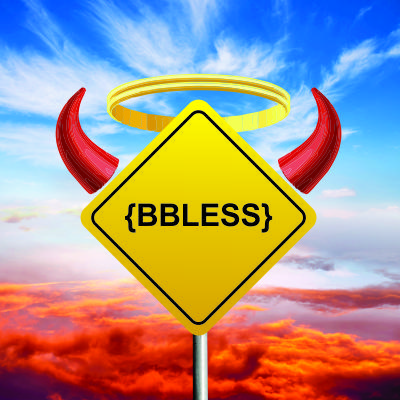We moved this to a TFS repository just after creating this - I've left this version behind for anyone who wants to get the drift of the original idea.
This is very much a work in progress - don't judge me, yet!
#Browser Based LESS ####Linked Encapsulated Style Sheets ###Process dynamic CSS using JQuery.
CSS doesn't natively allow extending the properties of one class to another.
But, how hard is it for JQuery to do this?
$(".1").addClass("2");
So why not use something like this (with a couple lines of that JQuery magic):
.button-primary {
@bless-with btn;
@bless-with btn-primary;
display: block;
margin: 5px;
}
button {
@bless-with button-primary;
}
to write code like this:
<button>Normal Button</button>
instead of like this:
<button class="btn btn-primary" style="display: block; margin: 5px">Normal Button</button>
Suck it SASS/LESS; No pre-processors required.
###Library Features
- Allow CSS classes to {bless} (suedo-inherit) other classes
- Validate site-specific CSS usage with meaningful errors
####{Bless}ed items {Bless}ed items have style sheet selectors that are {bless}ed with the classes of other selectors. It works a lot like inheritence; kinda-sorta like a mixin. But, it's not really either, we're just adding classes at run-time.
.button-primary {
@bless-with btn;
@bless-with btn-primary;
display: block;
margin: 5px;
}
button {
@bless-with button-primary;
}
In this first example, all button elements are {bless}ed by the '.button-primary' class. The '.button-primary' class has multiple {bless}ings ('.btn' and '.btn-primary') and some additional properties. So, button elements don't need any class decorations at all in the code to receive '.btn', '.btn-primary' (bootstrap) and '.button-primary' (local) at run-time.
<button>Normal Button</button>
results in:
<button class="btn btn-primary" style="display: block; margin: 5px">Normal Button</button>
at run-time.
{Bless}ings can be recursive:
.first {
height: 150px;
width: 150px;
margin: 25px;
}
.second {
@bless-with first;
background-color: lightgray;
}
.third {
@bless-with second;
border: 5px solid orange;
}
In the above example, the '.third' class is {bless}ed with the '.second' class (which is {bless}ed with the '.first' class). The end result is that any item that has class="third", will get all 3 classes at run-time.
<div class="third" />
results in:
<div class="first second third" style="height: 150px; width: 150px; margin: 25px; background-color: lightgray; border: 5px solid orange" />
at run-time.
####Cursed items Of course, there will always be the one item that just has to be different ... just add a "cursed" attribute to an item and the {bbless} library will ignore it.
The second part of the library, makes sure you did it right.
##The DAMNED The Demanded Attribute Must Not Equal Default.
####Commandments Commandments are a list of rules that the library enforces.
For example: width must be set for items that have class="centered", It's not a default attribute; but required for margin:auto to function properly.
Or: or assumes parent position is absolute (but it's not).
Or: used two conflicting classes (style-sin)
####Sinners Sinners are objects that break commandments.
If a sinner breaks a commandment, the library will generate a descriptive error in the console and cause the "sinner" to pulsate red or be appended with a small set of horns.
During testing, jQuery runs thru the commandments and all the elements at run-time.
###Why do we need {BBLESS}?
-- I understand the need for decorating buttons as buttons, tables as tables, and sections as sections in a large library; because sometimes an <a /> acts like a <button />, or a <div /> acts like a <section />. But, most of the time, a <cigar class="cigar cigar-default"> is just a <cigar />.
-LESS/SASS are great, but pre-processing adds a significant layer of complexity (which can be more trouble than it's worth - particularly in static environments).
-We're using JQuery anyway.
-Allowing the functionalty ultimately results in reduced/cleaner code.
-Works on static files.
-Light-footprint.
Ok, so it doesn't blend rgb colors and alphas, but it could be extended to do so.

